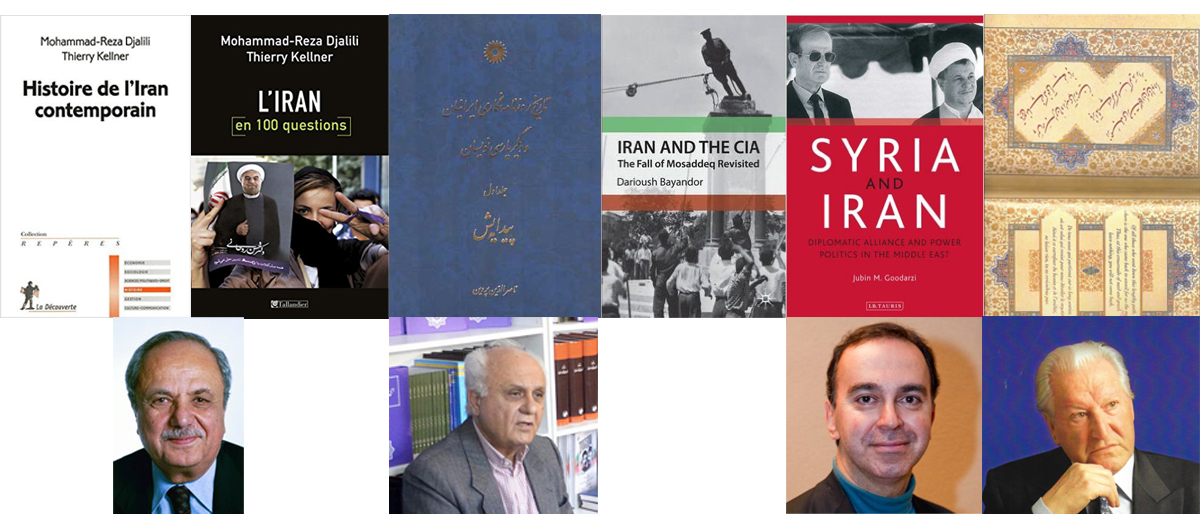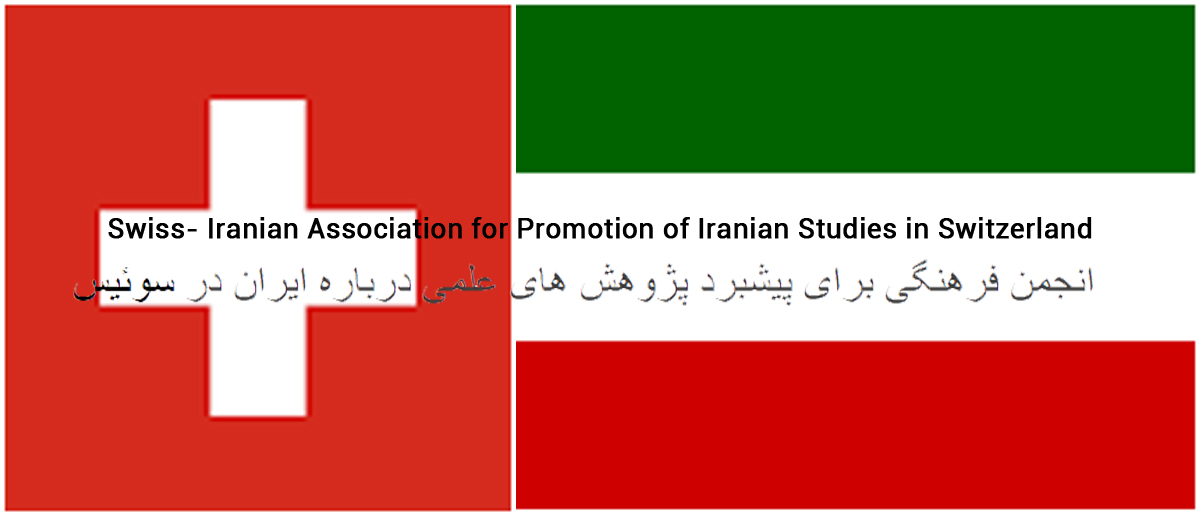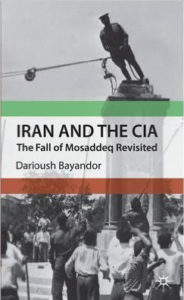Slider Image 1 Content


Slider Image 1 Content

Slider Image 2 Content
Iran-Étude est une association culturelle suisse-iranienne de caractère apolitique, indépendant et sans but lucrative, dédiée à la promotion d’études socioculturelles et historiques sur l’Iran en Suisse. Des livres et des articles publiés par chercheurs Suisses ainsi que des monographies non-publié sur l’Iran dans différentes branches des sciences humaines seront présentés dans un but promotionnel; la traduction de tels ouvrages depuis ou vers la langue persane pourrait être facilitée à travers la création virtuelle de passerelle entre auteur et traducteur. Ces services sont gratuits sans engager la responsabilité légale de l’association.
Contact: contact@iranetudeassociation.com
Consultant technique: Khalid Wahmane
The Shah, the Islamic Revolution and the United States
Publisher: Palgrave Macmillan (New York, London)
Expected Release December, 2018
Available Formats: Hardcover and eBook
https://www.palgrave.com/de/search?query=Darioush+Bayandor
https://www.amazon.com/s/ref=nb_sb_noss?url=search-alias%3Dstripbooks-intl-ship&field-keywords=bayandor
https://www.palgrave.com/de/why-publish/author-perspectives
***

چهل سال پیش، انقلاب اسلامی جامعه ایران را دگرگون کرد و چشم انداز سیاسی خاورمیانه را به شکلی پایدارتغییر داد. کتابی جدید درباره این رویداد پراهمیت، تحت عنوان، شاه، انقلاب اسلامی و ایالات متحده از سوی انتشارات Macmillan–Palgraveدر نیویورک و لندن در شرف انتشار است. نویسنده کتاب،داریوش بایندر، بر اساس منابع آرشیوی جدید، به بازبینی پویایی های ملی و بین المللی پیچیده ای که یک کشور نسبتا مرفه رابه هرج و مرج کشاند و به انقلاب اسلامی منجر شد پرداخته است. در آغاز کتاب دگرگونی های اجتماعی و اقتصادی و فرهنگی از دهه ۱۹۶۰به بعد مورد بررسی قرارگرفته است و به دنبال آننویسنده به شرح وقایع دهه۱۹۷۰ و حکومت شاه، ظهور جنبش های مخالف وعواملی که نظام شاهنشاهی را به چالش کشید و موجبات شورش و نافرمانی گردید، در پس زمینه بیماری شاه که مدت کوتاهی پس از سقوطش در بهمن ۱۹۵۷ به درگذشت او منجر شد، پرداخته است.در این کتاب بررسی مشروحی از تاثیر دولت کارتر و نقش یک گروه از مقامات ارشد این دولت درروند رویداد های سیاسی در ماه های واپسین رژیم پادشاهی به عمل آمده است که حاکی ازعملکردی غیر منتظره و حتی تعجب آوراست، ولی حساب این اعما ل که در آن زمان بر اساس فرضیات واقع گرایانه طرح ریزی شده بود از روایات رایج توطئه امریکا و غرب جدا نگه داشته شده است.
***
The Islamic Revolution in 1979 transformed Iranian society and reshaped the political landscape of the Middle East; its reverberations still resonate in the world politics today. A new book on this seminal event is being published by Palgrave-Macmillan (New York-London), under the title, The Shah, the Islamic Revolution and the United States. The author, Darioush Bayandor, draws upon heretofore untapped archival evidence and a host of other primary sources to reexamine the complex domestic and international dynamics that threw a modernizing state into chaos and yielded an Islamic Republic. Beginning with the socioeconomic and cultural transformation of the 1960s, the narrative follows the Shah’s rule through the 1970s, tracing the emergence of opposition movements and the triggering events of the revolt in 1977-78, against the backdrop of errors and miscalculations by an ailing ruler who succumbed shortly after his February 1979 overthrow.The author proceeds to an in-depth examination of the impact of the Carter administration and the role played by a group of senior officials of that administration, revealing unexpected even surprising paradoxes. A distinction is however made between the still rife mythology of conspiracy and the reality of conduct by the American officials who acted on worldly calculations of expediency.
***
Il y a quarante ans, la Révolution islamique en Iran remodelait la société iranienne et transformait durablement le paysage politique du Moyen-Orient. Un nouvel ouvrage sur cet évènement, dont les conséquences se répercutent encore aujourd’hui, vient d’être édité par Palgrave-Macmillan (New York-Londres), sous le titre, The Shah, the Islamic Revolution and the United States. (Date de sortie, octobre 2018).S’appuyant sur des matériel d’archives jusqu’à ici inexploitées, ainsi que un vaste éventail de sources primaires, l’auteur, Darioush Bayandor, réexamine les dynamiques nationales et internationale complexes qui ont plongé un pays plutôt prospère dans le chaos et mené à la Révolution islamique. En commençant par la transformation socio-économique et culturelle des années 60, ce livre suit le règne du Shah dans les années 70, retrace l’émergence de mouvements d’opposition et explore les éléments déclencheurs des émeutes sur la toile de fond de la conduite peu cohérent d’un roi, atteint par une maladie – gardée secrète – qui l’emporta peu après sa chute en février 1979. L’auteur procède à un examen approfondi de l’impact de l’administration Carter et du rôle joué par un groupe des hauts responsables de cette administration, révélant ainsi des paradoxes inattendus, voire même surprenants, toute en faisant la part des choses entre la mythologie de complot et la réalité de ce comportement, basé sur des calculs expédients et mondains.
***
La Revolución Islámica en 1979 transformó la sociedad iraní y alteró el panorama político de Medio Oriente; sus repercusiones aún resuenan en la política mundial de hoy. Un nuevo libro sobre este evento seminal acaba de ser publicado por Palgrave-Macmillan (Nueva York-Londres), bajo el título, The Shah,The Islamic Revolution and the United States. (Fecha de salida diciembre 2018). El autor, Darioush Bayandor, recurre a evidencias de archivo hasta ahora no explotadas para reexaminar las complejas dinámicas nacionales e internacionales que arrojaron un estado modernizador al caos y produjeron una República Islámica. Comenzando con la transformación socioeconómica y cultural de la década de 1960, la narrativa sigue el reinado del Sha en la década de 1970, rastreando el surgimiento de movimientos de oposición y los eventos desencadenantes en 1977-78, en un contexto de equivocaciones y errores de cálculo por parte de un monarca enfermo que murió poco después su caída en el febrero de 1979. El autor procede a un examen en profundidad del impacto de la administración Carter y el papel desempeñado por un grupo de altos funcionarios de esa administración, revelando paradojas sorprendentes. Sin embargo, se hace una distinción entre la mitología de la conspiración y la realidad de la conducta de los funcionarios estadounidenses que actuaron según los cálculos mundanos de la conveniencia.

 Darioush Bayandor
Darioush Bayandor
درباره اسناد جدید سازمان سیا
درسا ل 2017 وزارت خارجه امریکا اسناد تازه ای درباره وقایعی که منجر به سرنگونی دولت ملی گرای دکتر محمد مصدق در مرداد 1332شد از جمله اسناد توطئه آژاکس انتشارداد. در این خصوص داریوش بایندر نویسنده کتاب ایران و سازمان سیا درمقاله ای تحت عنوان «زبان صامت اسناد و رویداد بیست و هشتم مرداد 1332؛ چرا اسناد جدید سازمان سیا و وزارت خارجه امریکا روایت رایج در مورد سرنگونی دولت دکتر مصدق را تائید نمیکند؟» درماهنامه اندیشه پویا، چاپ تهران شماره۴۴ مرداد۱۳۹۶ به بررسی جامعی از این اسناد پرداخته است.
The Silent Voice of Archives; why the recently-released CIA secret documents do not confirm the commonly held assumptions on the fall of Mosaddeq?
In May 2017 the Department of State released a new batch of documents related to the CIA-MI6 plot (code named TP-Ajax) to overthrow Iran’s liberal-nationalist icon, prime-minister Mohammad Mosaddeq. The new release includesthe bulk of the secret CIA files on the TP-Ajax planning and execution from April to September 1953. On this occasion the Iranian monthly magazine, andishepuya, in its Mordad 1396 issue (August 2017), has devoted a retrospective on the event to which several academics and specialists of that epoch, including Darioush Bayandor, Swiss-Iranian author of the book, Iran and the CIA, the Fall of Mosaddeq Revisited ( Palgrave.2010) contributed.In his 2010 book Bayandor had argued that following the failure of TP-AJAX coupon August 15, 1953 the CIA operatives in Tehran turned their attention to a different plan to foment tribal and military insurrections in southern Iran under the leadership of General Fazlollah Zahedi,in anticipation of a communist takeover of the capital. In this frame of mind the CIA missed a different dynamicwhich was at work following the flight of the Shah to Baghdad on the 16thpropelled by the clerical hierocracy and which led to the overthrow of Mosaddeq on 19 August after the loyalist mid-ranking army officers joined the fray in early afternoon hours of that fateful day. The CIA chief operative in Tehran, Kermit Roosevelt, subsequently claimed that he had planned the events of 19 August and took credit for the fall of Mosaddeq. For decades academics as well as informed opinion have maintained that the fall of Mosaddeq was the result of the CIA intervention. In his book Bayandor dismissed Roosevelt’s post-factum claims as pure prevarication and distortion detailing his arguments to this effect in two elaborate chapters which are now confirmed by the declassified CIA files recently released. Among these files a cable transmitted by Roosevelt in very morning of 19 August (doc. 285, FRUS supplement 2017 https://history.state.gov/historicaldocuments/frus1951-54Iran/d285) reveal that he and his team had no clue about the events that were about to unfold in Tehran in the hours ahead.
***
La voix silencieuse des archives; pourquoi les documents secrets de la CIA ne confirment-t-ils pas le récit classique de la chute de Mosaddeq?
En mai 2017, le Département d’État a publié une nouvelle série de documents relatifs au complot de la CIA-MI6 (nom de code TP-Ajax) visant à renverser le gouvernement du Premier ministre Mohammad Mosaddeq, figure emblématique du libérale-nationalisme de l’Iran d’après-guerre. La nouvelle série inclut la majeure partie des fichiers secrets de la CIA sur le complot TP-Ajax, couvrant la période d’avril à septembre 1953. À cette occasion la revue mensuel iranienne, andishepuya, dans son édition de Mordad 1396 (août 2017), no. 44, a consacré une rétrospective sur l’événement à laquelle s’sont apportées leur contributions plusieurs universitaires et chercheurs spécialistes de cette époque dont Darioush Bayandor, auteur suisse-iranien de l’ouvrage, Iran and the CIA, the Fall of Mosaddeq Revisited (Palgrave.2010).
Dans cet ouvrage, Bayandor avait soutenu qu’après l’échec du coup d’état de TP-AJAX dans la nuit de 15-16 août, 1953, les agents de la CIA à Téhéran se sont penchés sur un plan différent visant à fomenter des insurrections tribales et militaires dans le sud de l’Iran sous la direction du Général FazlollahZahedi, ceci, en prévision d’une prise de contrôle communiste à Téhéran, inévitable selon leur estimation. Dans cet état d’esprit, la CIA aurait passé à côté d’une dynamique différente qui était à l’œuvre après la fuite du Shah à Bagdad au lendemain de l’échec du coup, le 16 août. Propulsé par la « hiérocratie » shiite, un mouvement de protestation surgisse dès les premiers heurs de la matinée du 19 août qui a conduit au renversement de Mosaddeq après que les officiers royalistes se sont joint la mêlée en début d’après-midi de cette journée fatidique. Le directeur d’opération de la CIA à Téhéran, Kermit Roosevelt, affirma par la suite qu’après l’échec de leur première tentative il aurait planifié les événements du 19 août. Ainsi, prendra-il crédit pour la chute de Mosaddeq. Pendant des décennies les milieux académiques ainsi que l’opinion avertie ont soutenus la thèse que la chute de Mosaddeq fut le fait de la CIA. Dans son livre Bayandor a rejeté les prétentions post factum de Roosevelt comme de pures fabrications en présentant une analyse soigneusement circonstancié qui est maintenant confirmée par les documents déclassifiés de la CIA. Parmi ceux-ci un câble transmis par Roosevelt le matin même du 19 août (doc. 285, supplément FRUS 2017 https://history.state.gov/historicaldocuments/frus1951-54Iran/d285) révèle que ce dernier et son équipe n’avaient la moindre idée des événements qui allaient se dérouler à Téhéran dans des minutes qui suivaient.

The versatile Yasmine Motarjemi is a world class food safety expert and advocate, living in Nyon, Switzerland. Her career path spanned the World Health Organization (WHO) in Geneva where for a full decade she worked for the prevention of foodborne illnesses before joining Nestlé in a senior position in the year 2000. During her ten-year tenure there, she upgraded the Nestlé food safety management system and managed international crises until she ended up warning the top Nestlé management of the multinational giant about her assessed failures and dysfunctions in safety management Since 2010 Yasmine has turned into a fervent advocate of food safety and human rights.
Born in Rasht, Iran, Yasmine had French schooling in Tehran before doing her graduate work on scholarship at the University of Languedoc, Montpellier, later at the University of Lund, Sweden, where she received a doctoral degree in Food Engineering 1988. She is the author, co-author or editor of numerous peer-reviewed articles, books, training manuals and other publications, including a book on food safety for children entitled Les Invisibles, (The InvisibleThings). In 2014, she published the Encyclopedia on Food Safety(Elsevier) and the book Food Safety Management: A Practical Guide for the Food Industry (Elsevier) which in 2015 received the PROSE award (Professional and Scholarly Excellence) in USA.

In recent years, through efforts by the renowned Swiss-Iranian cardiothoracic surgeon, Professor Hossein Sadeghi, Omar Khayyam’s Rubaiyat or quatrain poetry have been published in eight languages which, other than the original, comprise of French, English Russian, Arabic, Spanish, Japanese and Mandarin. Considered the crown jewel of Iran’s rich literature, the Rubaiyat were made famous in the west in the nineteen century by English Poet Edward FitzGerald who magisterially readapted the quatrains to the English language. Lire plus …
By Darioush Bayandor
Throughout centuries female literally talents in Iran have been quashed and sidelined in the male-dominated socio-cultural environment of the country. Poetry is a distinct part of Iran’s cultural identity yet only five percent of some 8000 catalogued poets since the tenth century are females. Among female literary profiles in the earlier centuries two earned lasting celebrity. Both belonged to the wider cultural sphere of the Persian-language which no longer corresponds to the present-day geographical boundaries. MahsatiGanjavi, was a twelve-century poetess living in Ganje (in to-day’s Azerbaijan) while the semi-legendry Rābe’ehBalkhi (bintKaab) lived in or around the tenth century in Balkh (in to-day’s Afghanistan). Little of their poetry has survived and the account of their lives is shrouded in fables. This article is an introductory focus on five modern era female icons who earned fame – some stardom – blending literally talents with an ability to rise above societal inhibitions and taboos. Lire plus …
By Darioush Bayandor
Hafez, Iran’s foremost prodigy in lyric poetry, who lived in the 14th century Persia, was also the nemesis of religious zealots of his time and beyond. Beyond a literally acclaim of unsurpassed scale, his poetry is viewed by masses with an aura of unearthly magnetism. His anthology, divan, is consulted by common folks for inspiration Lire plus …